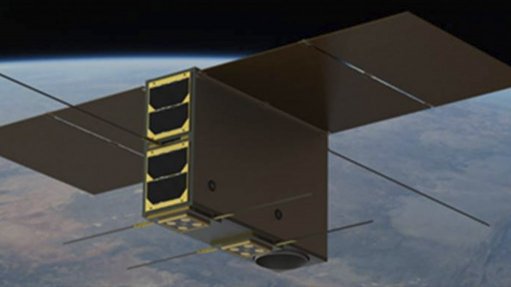
A computer-generated image of a 6U-Nanosatellite designed by SCS
Photo by: SCS
South Africa has the technological capability to create its own constellation of nano- or micro-satellites to supply the country, the Southern African region, or even the whole African continent, to enable the implementation of the Internet of Things (IoT) or the Internet of People (IoP) across the country, region or continent, regardless of fibre or wireless network coverage. This was highlighted at the recent 2019 Aeronautical Society of South Africa Conference in Pretoria by Space Commercial Services (SCS) chairman Sias Mostert.
“Space has a key role to play in enabling Industry 4.0, no matter how remote your location in Africa,” he said. “Space is now ubiquitous in many respects in our economy. … Space technology can really enable the Fourth Industrial Revolution over all geographies.”
South Africa can design and make both the nano- or micro-satellites, and key systems for them, locally. Miniaturisation has transformed the capabilities of both these categories of satellites out of all recognition. Even nanosatellites, measuring as little as 10 cm x 10 cm x 30 cm, can (and do) now carry imagers that provide useful and useable Earth observation imagery. Such imagers have been designed and are made in South Africa.
He explained that satellites travel at about 7 km per second, taking some 100 minutes to orbit the Earth (which rotates under them). This means that communications satellites are overhead any one spot on the planet’s surface only two to four times a day. In the case of Earth Observation satellites, because of their orbits, they can provide coverage anywhere only once every two to three days.
Consequently, individual satellites are of very limited use. What are required are constellations of satellites. These allow daily or even more frequent satellite coverage.
Daily satellite coverage, he pointed out, brought lots of advantages. It could be used to monitor fixed assets, or track wildlife. But other applications needed hourly satellite coverage. These were those concerned with monitoring quite fast moving assets, whose movement could be measured in periods of two hours or more. For example, water whose processing quality was being monitored. And there were further applications that needed even more frequent coverage.
SCS has developed and flown and proved in space both nanosatellites and key components, including an imager and a modular power system. “Countries invest in space programmes because they attract scientists, technologists and engineers,” observed Mostert. South Africa had a long space tradition, dating back to the very first days of satellite tracking. It has the base to expand and develop its space operations.
The question was, who would fund such a satellite constellation programme? The cost, he noted, would depend on the scale. But, he assured, near real-time satellite coverage of the country could be achieved with an investment of about €50-million. Actual real-time coverage would be far more expensive, costing in the range of €200-million to €400-million. On the other hand, just having daily coverage a few times a day would be much cheaper, as it would require only a very few satellites.